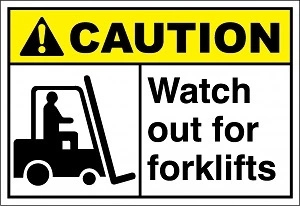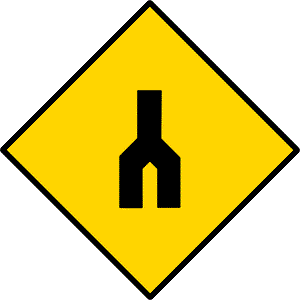Have you ever walked into a workplace, public area, or construction site and seen a bold yellow triangle with an exclamation mark? Or a red circle with a line slashed through it? These are warning signs — and they exist for a reason. Whether you’re at home, on the road, or in an industrial environment, warning signs are crucial safety tools designed to alert people about potential hazards or necessary precautions. Understanding what they are, how to spot them, and why they matter can mean the difference between safety and serious injury.
In our everyday routines, these signs are so common that they often blend into the background. But ignoring or misinterpreting them can lead to accidents, costly penalties, or even fatalities. This article will walk you through what warning signs are, how to properly identify them, and why they are essential in promoting a culture of safety and awareness. We’ll explore real-life scenarios, compliance guidelines, and expert insights — all backed by safety principles — to give you the full picture.
What Are Warning Signs?
Warning signs are standardized visual indicators that alert individuals to potential hazards or risks in a specific environment. They do not necessarily prohibit or mandate an action but serve as a precautionary notice to proceed with care. These signs use distinct colors, shapes, and symbols to communicate danger or caution clearly and quickly.
They are found in various settings, including:
-
Construction zones
-
Manufacturing plants
-
Public roads and highways
-
Hospitals and laboratories
-
Schools and commercial buildings
Key Characteristics of Warning Signs
Warning signs have specific characteristics that make them instantly recognizable:
-
Color: Typically yellow with black symbols/text (per ISO 7010 and ANSI Z535 standards)
-
Shape: Most commonly a triangle
-
Symbols: Pictograms like lightning bolts (for electrical hazards), exclamation marks, or falling objects
-
Text: Optional but often included to clarify the warning
Types of Warning Signs
-
General hazard signs: Indicate potential risks not covered by specific symbols (e.g., exclamation mark)
-
Specific hazard signs: Communicate exact dangers like “Slippery Surface” or “High Voltage”
-
Temporary hazard signs: Used in changing environments (e.g., wet floor signs)
Regulatory Basis
Regulations such as OSHA Standard 1910.145 and ISO 7010 require that warning signs meet certain design and placement guidelines to ensure visibility, readability, and clarity. These standards are applicable across various industries and workplaces to protect both workers and the general public.
How to Identify Warning Signs
1. Learn the Standard Visual Language
Warning signs rely on universal visual language, so being able to interpret them at a glance is essential:
-
Yellow background + black symbol = warning
-
Red = prohibition or fire safety
-
Blue = mandatory action
-
Green = safe condition or emergency escape
Understanding this color-coding allows you to instantly identify a warning sign’s intent.
2. Observe the Environment
Look around your surroundings for signs posted near:
-
Electrical panels
-
Slippery or uneven surfaces
-
Machinery or moving parts
-
Areas requiring personal protective equipment (PPE)
-
Confined spaces or chemical storage rooms
These signs are strategically placed near or on hazards to draw attention before you engage with the environment.
3. Interpret Symbols Correctly
Here are a few examples of commonly misinterpreted symbols and what they mean:
| Symbol | Meaning | Common Misunderstanding |
|---|---|---|
| ⚡ | High Voltage | Often mistaken as just electricity |
| ☣ | Biohazard | Some confuse it with a chemical warning |
| 🔥 | Flammable | Sometimes misread as a heating warning |
| ⛔ | Do Not Enter | Mistaken for a stop sign |
4. Read Supplementary Text (If Present)
Some signs include text for added clarity, especially in multilingual or diverse workplaces. For example:
-
“Warning: Asbestos – Authorized Personnel Only”
-
“Caution: Slippery When Wet”
-
“Danger: Confined Space – Entry by Permit Only”
Reading this can clarify the risk level and any immediate action required.
5. Train Regularly
Organizations should conduct routine safety training to educate employees and visitors about how to recognize and respond to warning signs. Practical drills and hazard recognition exercises can reinforce this knowledge.
Insight: According to the National Safety Council, 85% of workplace injuries could be prevented by better hazard recognition — including understanding warning signage.
Importance of Warning Signs
1. Prevention of Injuries and Fatalities
At their core, warning signs are about preventing harm. A strategically placed sign near a forklift pathway or chemical storage area can stop someone from unknowingly walking into danger. These signs:
-
Prevent slips, trips, and falls
-
Protect against electrical shocks and burns
-
Warn of hazardous substances
-
Prevent exposure to biohazards or radiation
Citation: The U.S. Bureau of Labor Statistics (BLS) reports that poor hazard communication contributes to over 2,000 preventable workplace fatalities annually.
2. Enhancing Situational Awareness
Warning signs create a culture of alertness. When consistently used and understood, they sharpen people’s attention to their surroundings and make them more conscious of potential dangers. For example:
-
In road construction, warning signs prepare drivers to slow down
-
In labs, biohazard warnings ensure safe disposal of materials
-
In manufacturing, “Moving Machinery” signs help workers stay alert
3. Legal and Regulatory Compliance
Failure to display appropriate warning signs can lead to legal penalties and compliance violations. Organizations are obligated under laws like:
-
The Health and Safety at Work Act
-
OSHA’s Hazard Communication Standard
-
The Control of Substances Hazardous to Health (COSHH) regulations
Failure to comply may result in fines, closure, or litigation in the event of an incident.
4. Protection of Property and Equipment
Warning signs are not just for people. They also help protect assets and infrastructure by minimizing the risk of misuse. For example:
-
“No Forklifts Beyond This Point” signs prevent equipment damage in fragile zones
-
“Static Electricity Hazard” signs protect sensitive electronics
-
“Keep Area Dry” prevents corrosion or equipment malfunction
5. Reinforcing Workplace Safety Culture
Displaying well-maintained and relevant warning signs contributes to a visible, proactive safety culture. Employees are more likely to follow procedures when they see visual reminders around them. This reduces complacency and encourages accountability.
Unique Insight: A 2023 workplace study by Safety+Health Magazine showed a 32% reduction in incidents in facilities that refreshed their warning signage every 12 months and incorporated them into routine toolbox talks.
Common Mistakes in Using Warning Signs
Even with the best intentions, organizations sometimes misuse or neglect warning signs. Here’s what to avoid:
1. Poor Placement: Signs that are hidden behind equipment or posted too high/low fail their purpose. Always place them at eye level and near the hazard zone.
2. Using the Wrong Type: Using a “Caution” sign where a “Danger” sign is required can underplay the seriousness of a threat. Familiarize yourself with proper categories:
| Warning Level | Sign Type | Example |
|---|---|---|
| Low | Caution | Wet floor |
| Medium | Warning | Electrical Room |
| High | Danger | Confined Space |
3. Overuse: Posting too many signs in a single area can overwhelm viewers and reduce the chance that any one sign will be noticed.
4. Worn-Out or Illegible Signs: Sun-faded, dirty, or torn signs are not only non-compliant—they’re dangerous. Always inspect and replace signs regularly.
Best Practices for Implementing Warning Signs
1. Conduct a Hazard Assessment: Before placing signs, perform a comprehensive risk assessment to identify hazards that require visual warnings.
2. Use Standardized Signage: Adopt signs that comply with ANSI Z535, ISO 7010, or OSHA standards to ensure universal recognition and legal compliance.
3. Integrate with Training: Incorporate warning sign recognition into onboarding safety programs, drills, and refresher courses.
4. Evaluate and Update Regularly: As the environment changes, update signage to reflect new risks. Conduct periodic audits to verify relevance and visibility.
5. Encourage Reporting: Create a culture where workers can report missing, damaged, or confusing signage. Include signage in your inspection checklist.
Real-World Scenarios: Warning Signs in Action
Scenario 1: Preventing Chemical Burns
In a manufacturing plant, a “Corrosive Material” warning sign near a storage cabinet helped an intern avoid opening a container with their bare hands. The sign led them to use proper gloves and eye protection, avoiding a potentially serious injury.
Scenario 2: Avoiding Electrocution
An “Electrical Hazard” warning near a server room helped a cleaner recognize the area as restricted. They contacted a supervisor instead of unplugging a device, avoiding electrocution and severe damage.
Scenario 3: Roadside Safety
A “Workers Ahead” warning sign alerted drivers to reduce speed on a rural road, which prevented a car from crashing into a road crew fixing a pothole.
Examples of Warning Signs
We will mention ten (10) warning signs;
- Caution: Watch out for the forklift

2. Dual Carriage Way Ends

3. Stop 100 Yard

4. Warning Road Cross

5. Junction on Bend Ahead

6. Narrow Road on Both Sides Ahead

The list is not conclusive.
If you have noticed, all the sign has two (2) different specific configurations. Either they take the shape of an equilateral triangle with a white background and thick red border, or have a yellow or orange background with black symbols or letters on a diamond-shaped or rectangular sign.
Conclusion: Don’t Just See Warning Signs — Understand Them
Warning signs are more than just symbols on a wall or post — they are life-saving tools. Knowing how to identify them and understanding their purpose is critical for preventing accidents, complying with regulations, and promoting a strong safety culture.
Whether you’re managing a factory floor, driving a delivery truck, or simply walking through a public building, being able to recognize and respond to warning signs can keep you and others safe.
So next time you see a triangle with an exclamation mark, take a moment to stop, assess, and act. That split-second awareness could save a life — maybe even your own.
Related Articles
What Are Mandatory Signs And How To Identify Them
21 Important Safety Signs & Symbols And Their Meanings
21 Very Important Road Signs And Their Meanings
A seasoned Health and Safety Consultant with over a decade of hands-on experience in Occupational Health and Safety, UBONG EDET brings unmatched expertise in health and safety management, hazard prevention, emergency response planning, and workplace risk control. With a strong passion for training and coaching, he has empowered professionals and organizations to build safer, more compliant work environments.
Certified in globally recognized programs including NEBOSH, ISO standards, and OSHA regulations, he combines technical know-how with practical strategies to drive health and safety excellence across industries. designing comprehensive HSE management systems or delivering impactful safety training, whether he] is committed to promoting a culture of safety and continuous improvement.
